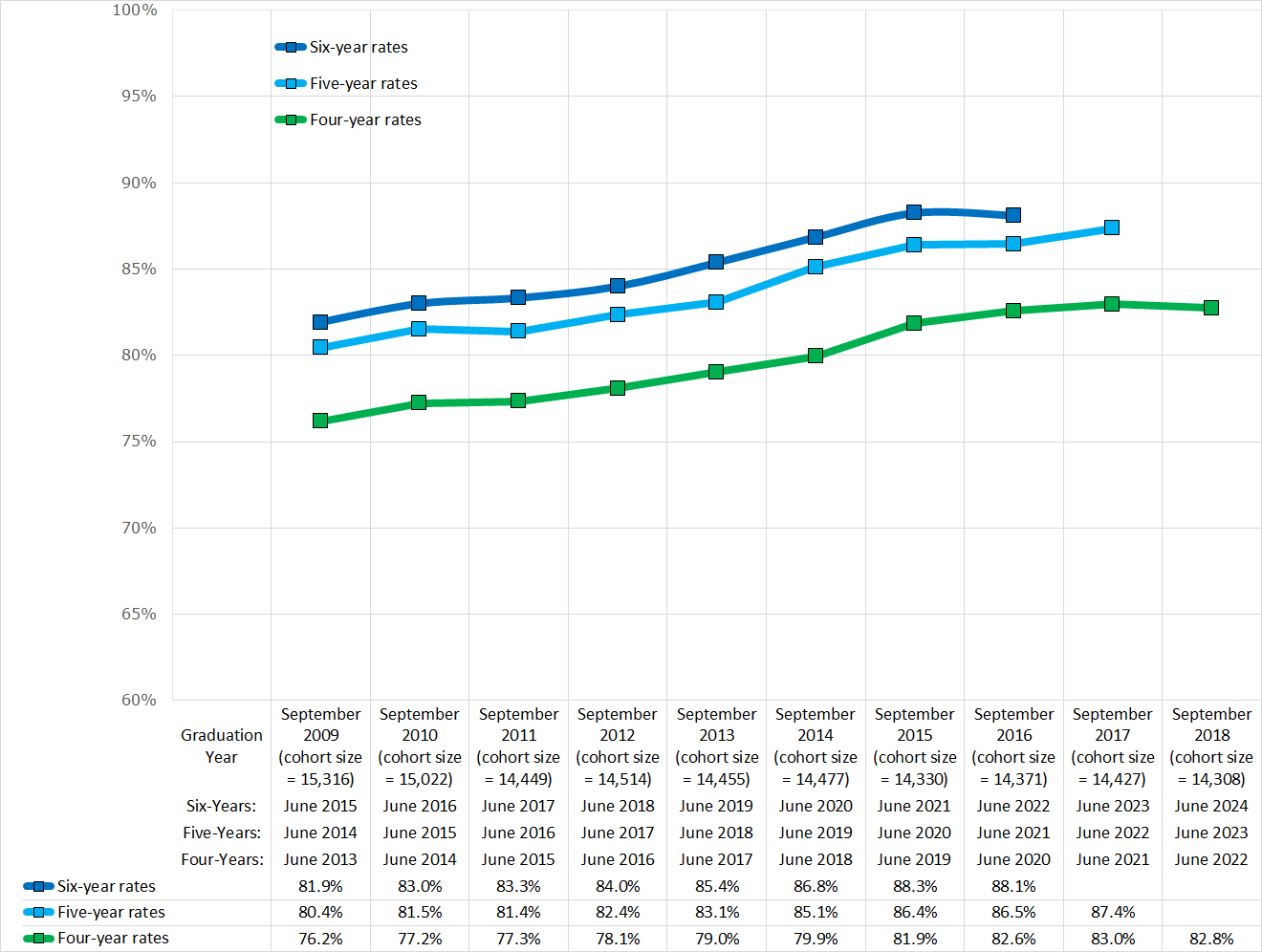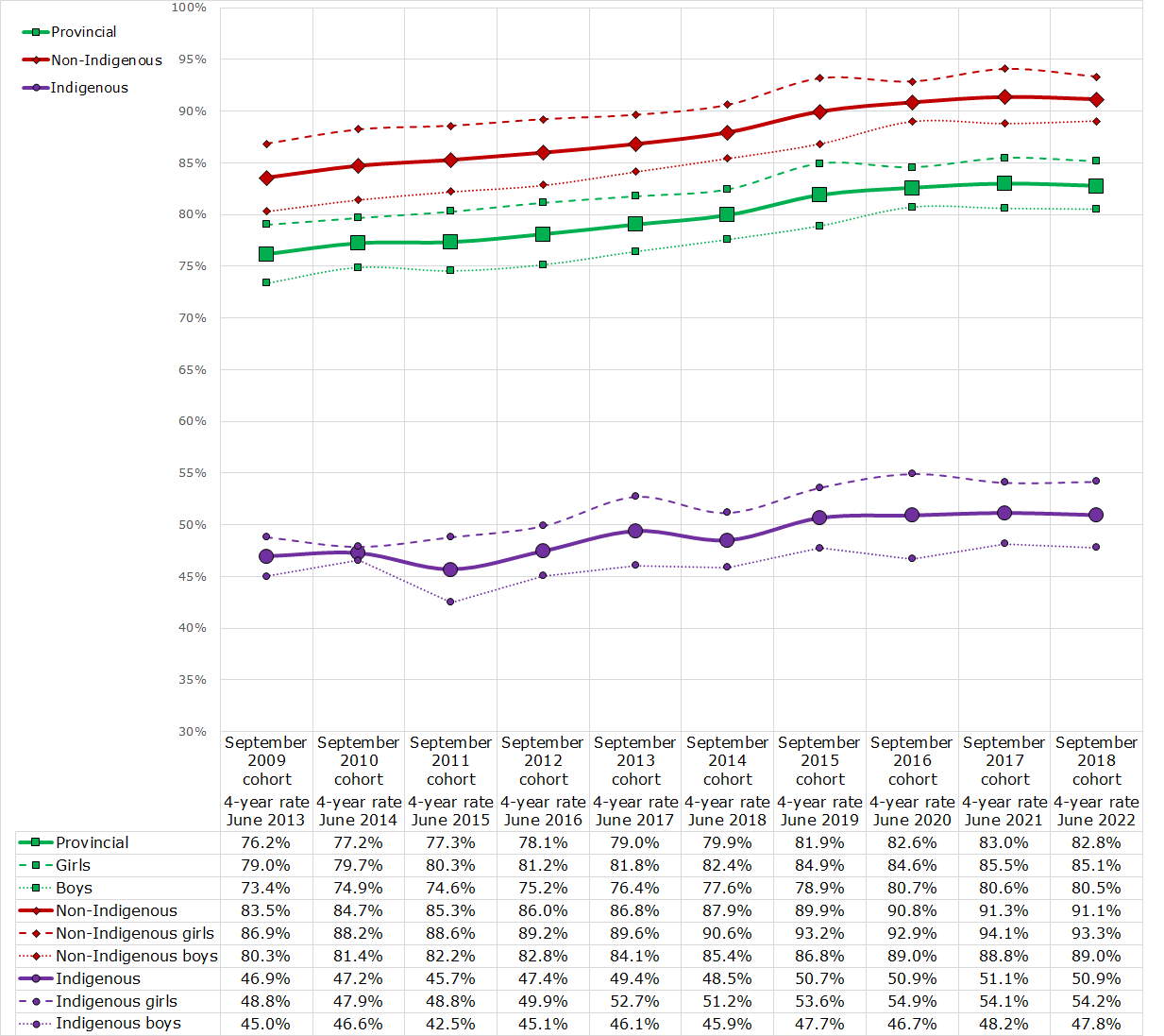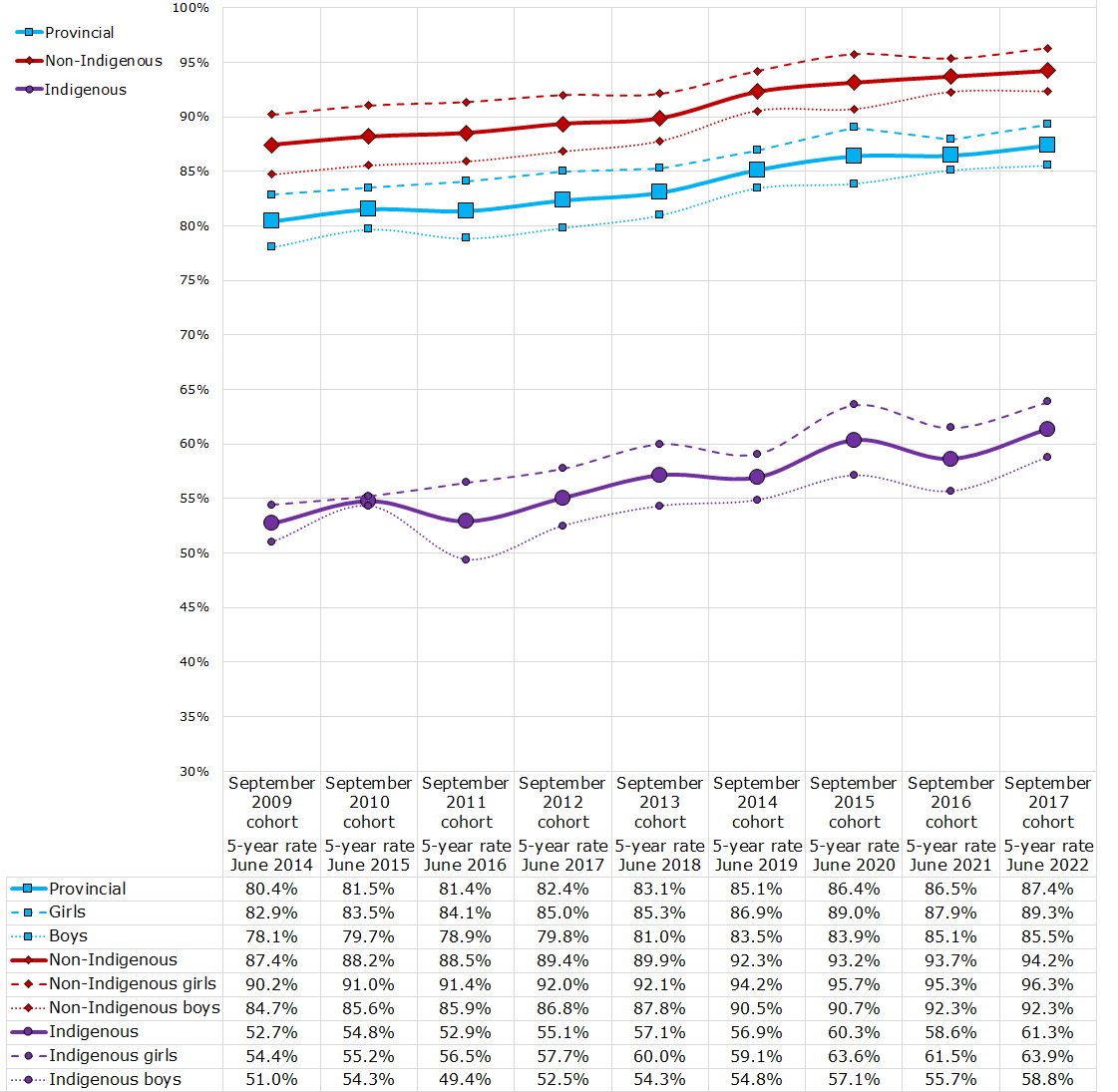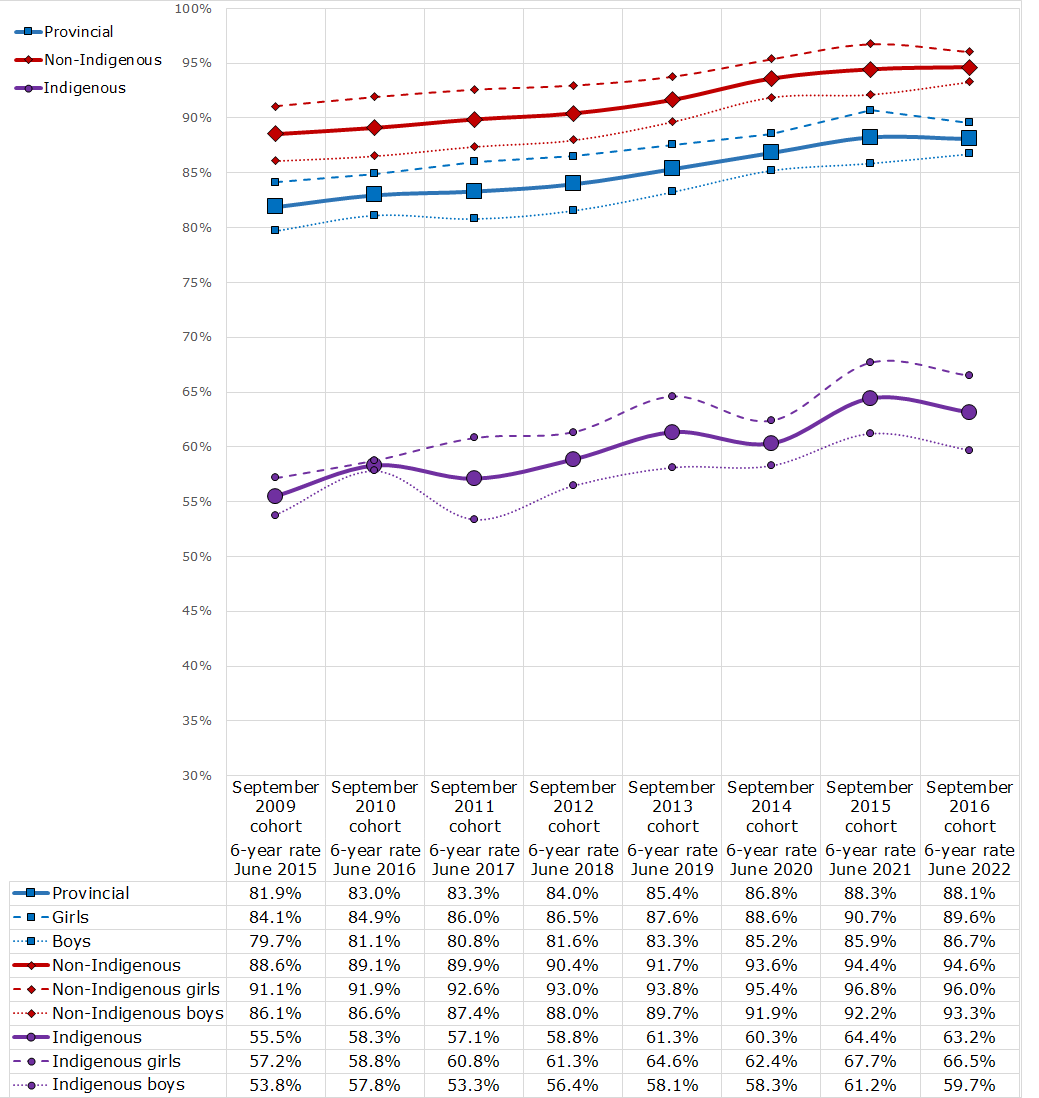High School Graduation Rates and Student Achievement Statistics
Manitoba Education and Early Childhood Learning is committed to increasing high school graduation rates and student success across the province. To understand where we are making progress and where improvement is still needed, we need to examine our data on student achievement in a variety of ways.
Manitoba’s Student-Tracked High School Graduation Rate
High school graduation is generally viewed as the minimum requirement for pursuing additional education and for entry into the world of work.
Manitoba's student-tracked method of calculating high school graduation rates allows us to understand how long it takes for individual students to graduate and to help us identify certain achievement gaps, such as those between male and female students and between Indigenous and non-Indigenous students.
High school graduation in Manitoba typically occurs within four years of beginning Grade 9. For some students, and for a variety of reasons, taking more time to obtain their credits for graduation could make the difference between successfully completing high school or not.
Manitoba’s four-year student-tracked high school graduation rate for June 2022 is 82.8%. For non-Indigenous students the rate is 91.1% and for Indigenous students it is 50.9%. The graduation rate improvement from a four-year rate to a six-year rate is 5.3 percentage points.
Manitoba’s Student-Tracked High School Graduation Rate in HTML Format
Manitoba’s High School Graduation Rates

Note 2: These figures reflect attrition rates based on Statistics Canada’s estimates of population, deaths, and mobility/migration for 2023. Thus, simply multiplying starting cohort sizes by graduation rates will not yield the number of graduates.
Four Year High School Graduation Rates

Five Year High School Graduation Rates

Six Year High School Graduation Rates

Divisional High School Graduation Rates
| Cohort | Four-Year Rates | Five-Year Rates | Six-Year Rates |
|---|---|---|---|
| September 2009 | June 2013 ( |
June 2014 ( |
June 2015 ( |
| September 2010 | June 2014 ( |
June 2015 ( |
June 2016 ( |
| September 2011 | June 2015 ( |
June 2016 ( |
June 2017 ( |
| September 2012 | June 2016 ( |
June 2017 ( |
June 2018 ( |
| September 2013 | June 2017 ( |
June 2018 ( |
June 2019 ( |
| September 2014 | June 2018 ( |
June 2019 ( |
June 2020 ( |
| September 2015 | June 2019 ( |
June 2020 ( |
June 2021 ( |
| September 2016 | June 2020 ( |
June 2021 ( |
June 2022 ( |
| September 2017 | June 2021 ( |
June 2022 ( |
N/A |
| September 2018 | June 2022 ( |
N/A | N/A |
High School Graduation Rates – June 2022 (![]() 944 KB)
944 KB)
More about Manitoba’s Student-Tracked High School Graduation Rates
To determine Manitoba’s student-tracked high school graduation rates, Manitoba Education and Early Childhood Learning (EECL) follows individual students in public and funded independent schools from Grade 9 and calculates the percentage who graduate within a certain amount of time. The rates do not include students from non-funded independent schools, First Nations schools (including those administered by Frontier School Division under educational agreements), or Adult Learning Centres.
To improve accuracy, this method makes adjustments for moving out of Manitoba, deaths, and the proportion of school age children in the province not enrolled in public and funded independent schools. Also, it allows for the disaggregation of graduation rates by male and female students as well as by Indigenous and non-Indigenous students.
The difference between the calculated rates and a 100% rate is not the high school dropout rate. While the difference would include students who have actually disengaged from attending school, it would also account for students who have transferred out of public and funded independent schools to enroll and potentially finish high school in non-funded independent schools, First Nations schools, and Adult Learning Centres (ALCs).
Until 2016, EECL also published a proxy cohort high school graduation rate, which was a ratio of the total number of graduates reported by public and funded independent high schools at the end of every academic year to the total Grade 9 enrolment in these schools four years prior to the year of graduation. The proxy cohort rate had many limitations from a policy and analytic perspective and EECL used it as a temporary indicator while developing capacity to produce a student-tracked rate. Thus, EECL has discontinued the publication of the proxy cohort rate and will only produce a student-tracked rate moving forward.


